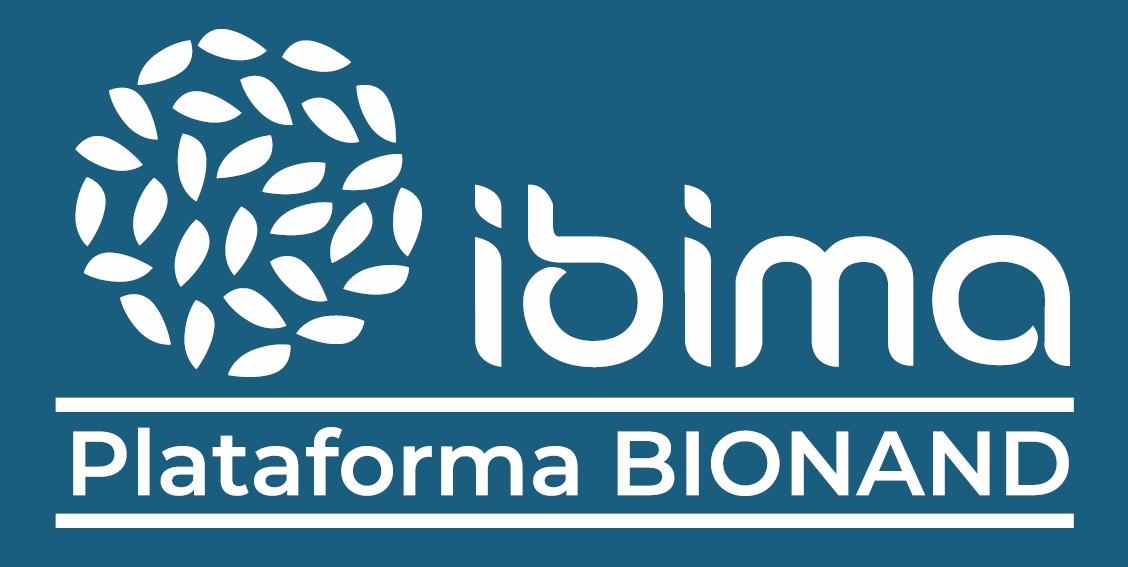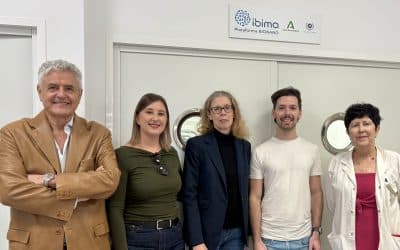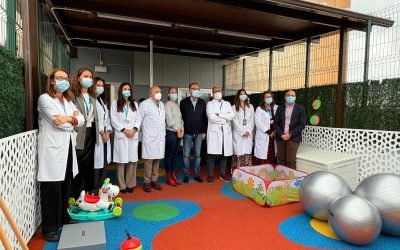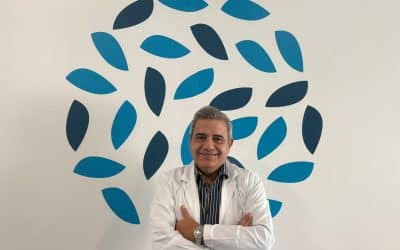This scientific work uses a discipline such as transcriptomics to influence the mutation of a gene that causes the development of Phosphomannomutase 2 Deficiency.
Researchers from the Biomedical Research Institute of Malaga and Nanomedicine Platform (IBIMA Plataforma BIONAND) and the University of Malaga (UMA) identify new therapeutic avenues for the rare disease, PMM2-CDG, known as Phosphomannomutase 2 Deficiency. This is a congenital disorder of glycosylation, a group of rare hereditary diseases that affect the process of glycosylation, which results in an essential modification for the function of many proteins in the body, as it involves the addition of sugars to proteins, something that directly affects the stability and functioning of many proteins and cells in our body.
The clinical symptoms of this deficiency are manifold, including neurological problems, slow growth and low body weight, distinct facial features or multi-systemic problems that can affect the liver, heart, digestive system and various eye problems, among others.
The trigger is mutation of the PMM2 gene, which encodes the enzyme phosphomannomutase 2, crucial in the glycosylation pathway. Diagnosis can be complex precisely because of the variability of symptoms. A combination of genetic testing and biochemical analysis is crucial to detect abnormalities in protein glycosylation.
Currently, there is no treatment for this type of rare disease, and the clinical approach focuses on the management of symptoms and the quality of life of patients, including multidisciplinary professionals from various fields such as physiotherapy, occupational therapy, treatments aimed especially at cardiac or digestive problems, and occasionally, if required, surgical interventions.
The team of researchers that form part of the ‘Molecular Bases of Biological Systems’ group (SIBIUMA) of the IBIMA BIONAND Platform, has carried out this study, which includes the Professor in the Department of Molecular Biology and Biochemistry at the UMA, attached to the Centre for Biomedical Research in Rare Diseases Network (CIBERER), and scientific coordinator of the Bioinformatics Unit of IBIMA Juan Antonio García Ranea, who, together with the rest of the team, has used advanced transcriptomic techniques to identify the cellular pathways affected that could lead to possible therapeutic pathways in this type of rare disease.
Transcriptomics is a discipline directly linked to precision or personalised medicine, which facilitates an individualised approach to the patient, allowing better results both in the diagnosis of a disease and in its treatment. In addition, it will make it possible to establish individualised therapeutic objectives that lead to the selection of drugs and their doses with a greater probability of success, allowing a higher success rate in monitoring the response to this treatment, in order to prevent possible adverse reactions or their effectiveness.
The fact that it is a multisystemic disease of variable severity has made it difficult to understand its molecular pathophysiology, making it limited and lacking effective treatments. In this sense, Juan Antonio Ranea said that in this study ‘we have combined transcriptome analysis of patient-derived fibroblasts, detecting defects in cell proliferation, cell cycle, matrix composition and cell migration, as well as a possible role of the inflammatory response in the pathophysiology of the disease’.
This fact provides a starting point so that the team ‘can continue to identify ways to develop new therapeutic strategies’. The scientific coordinator of the Bioinformatics Unit of the Institute has assured that ‘the work we have developed shows that treatment with a pharmacological chaperone could reverse the differential expression of some genes, opening the way to possible therapies’. Pharmacological chaperones are small molecules capable of binding to proteins that, as a result of a genetic alteration, are unable to fold properly, helping them to adopt their correct folding and thus recover their optimal function.
The study, published in the journal ‘BBA - Molecular Basis of Disease’, also highlights the potential of the drug chaperone, which was shown to be effective in correcting abnormal gene expression in patients' fibroblasts. This finding is a crucial step towards developing more effective treatments for this debilitating disease.
For his part, Miguel Ángel Medina, who in addition to being the researcher in charge of this group at the Institute, is also currently the coordinator of the IBIMA-Rare scientific area, dedicated to biomedical research into rare diseases, added that ‘our results not only broaden our knowledge of this type of disease, but also put the application of systems biology approaches and transcriptomic analysis at the forefront of biomedical research, by allowing us to identify key cellular motifs affecting this gene deficiency, providing new therapeutic targets for rare diseases, but also puts the application of systems biology approaches and transcriptomic analysis in a relevant place in biomedical research, by allowing the identification of key cellular motifs that affect the deficiency of this gene, providing new therapeutic targets for further work in future studies within this line of research’.
In addition, as coordinator of this scientific area of the Institute, he said he was ‘satisfied that more and more scientific production is being generated at the Institute, which allows professionals to have a greater number of resources available to address rare diseases’. This scientific area, of a transversal nature, brings together groups from the other scientific specialities of the IBIMA BIONAND Platform in a clear effort to combine knowledge, synergies and exploit the different ways of collaboration between professionals and their available resources.
In addition to professionals from IBIMA Plataforma BIONAND and the University of Malaga, scientists from the Autonomous University of Madrid, the IdiPAZ Health Research Institute in Madrid and the Sant Joan de Déu Hospital in Barcelona have also participated in this study.



